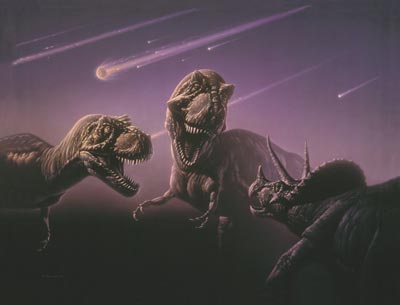
Scientists have found that dinosaurs may be partly to blame for a change in climate because they created so much flatulence.
Professor Graeme Ruxton of St Andrews University, Scotland, said the giant animals spent 150 years emitting the potent global warming gas, methane.
Large plant-eating sauropods would have been the main culprits because of the huge amounts of greenery they consumed.
The team calculated the animals would have collectively produced more than 520 million tons of methane a year – more than all today’s modern sources put together.
It is thought these huge amounts could easily have been enough to warm the planet.

One of the animals, a 90-ton argentinosaurus, which measured 140 ft in length, would have consumed at least half a ton of food in one day.
After breaking down in the animal’s stomach it would have produced thousands of litres of the greenhouse gas compared with a modern cow which only produces 200 litres of methane daily.
Methane is up to 20 times more effective in trapping heat in the atmosphere than carbon dioxide (CO2).
It is created from a variety of natural and human-influenced sources which include landfills, natural gas, petroleum sources and agricultural activities.
Scientists claim humans have pushed levels of the gas up 2.5 times higher than they should be and estimate this is responsible for 20% of modern global warming.
Cows and other livestock currently only emit about 100 million tons of methane a year.
According to Prof. Graeme Ruxton and his co-researcher David Wilkinson, of Liverpool John Moores University, this is only a fifth of what was produced when Dinosaurs walked the Earth.
“In fact, our calculations suggest these dinosaurs may have produced more methane than all the modern sources, natural and human, put together,” said David Wilkinson to the Sunday Times.
The research is due to be published in an academic journal this week.